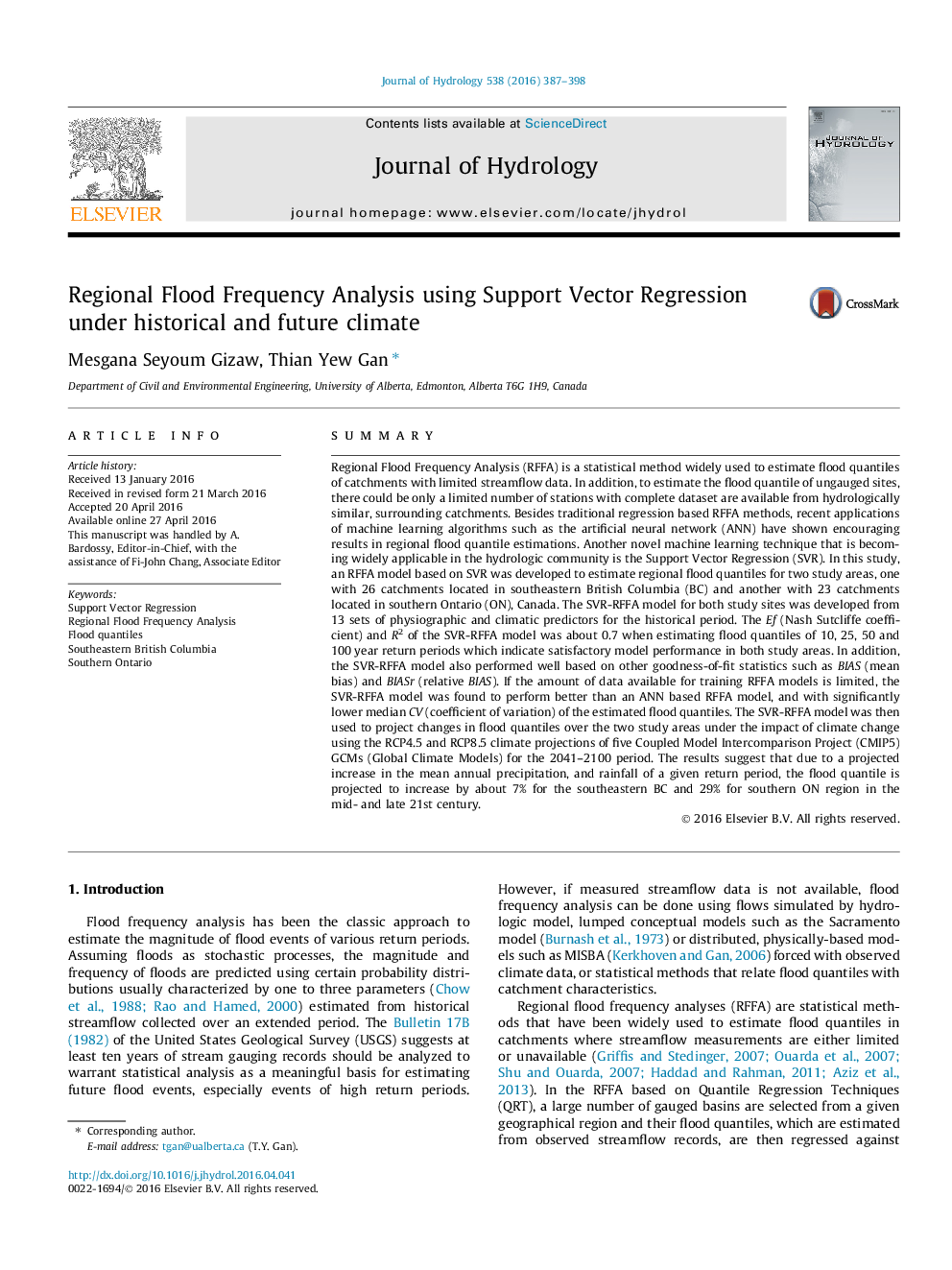| کد مقاله | کد نشریه | سال انتشار | مقاله انگلیسی | نسخه تمام متن |
|---|---|---|---|---|
| 6409673 | 1629914 | 2016 | 12 صفحه PDF | دانلود رایگان |
- Regional Flood Frequency Analysis, RFFA based on Support Vector Regression (SVR).
- SVR-RFFA models estimated accurate regional flood quantiles of 2 climatic regions.
- SVR-RFFA model predicts flood quantiles more consistently than ANN-RFFA model.
- SVR-RFFA model projected increased flood quantile during mid and late 21st century.
SummaryRegional Flood Frequency Analysis (RFFA) is a statistical method widely used to estimate flood quantiles of catchments with limited streamflow data. In addition, to estimate the flood quantile of ungauged sites, there could be only a limited number of stations with complete dataset are available from hydrologically similar, surrounding catchments. Besides traditional regression based RFFA methods, recent applications of machine learning algorithms such as the artificial neural network (ANN) have shown encouraging results in regional flood quantile estimations. Another novel machine learning technique that is becoming widely applicable in the hydrologic community is the Support Vector Regression (SVR). In this study, an RFFA model based on SVR was developed to estimate regional flood quantiles for two study areas, one with 26 catchments located in southeastern British Columbia (BC) and another with 23 catchments located in southern Ontario (ON), Canada. The SVR-RFFA model for both study sites was developed from 13 sets of physiographic and climatic predictors for the historical period. The Ef (Nash Sutcliffe coefficient) and R2 of the SVR-RFFA model was about 0.7 when estimating flood quantiles of 10, 25, 50 and 100Â year return periods which indicate satisfactory model performance in both study areas. In addition, the SVR-RFFA model also performed well based on other goodness-of-fit statistics such as BIAS (mean bias) and BIASr (relative BIAS). If the amount of data available for training RFFA models is limited, the SVR-RFFA model was found to perform better than an ANN based RFFA model, and with significantly lower median CV (coefficient of variation) of the estimated flood quantiles. The SVR-RFFA model was then used to project changes in flood quantiles over the two study areas under the impact of climate change using the RCP4.5 and RCP8.5 climate projections of five Coupled Model Intercomparison Project (CMIP5) GCMs (Global Climate Models) for the 2041-2100 period. The results suggest that due to a projected increase in the mean annual precipitation, and rainfall of a given return period, the flood quantile is projected to increase by about 7% for the southeastern BC and 29% for southern ON region in the mid- and late 21st century.
Journal: Journal of Hydrology - Volume 538, July 2016, Pages 387-398
